A Guide for Guitarists to Sound Good in a Live Setting
Guest Post by Guitarist, Jason Rooney
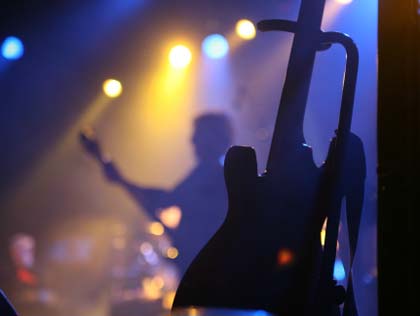 A live gig can sometimes be a chaotic environment. Cramped spaces, gear and cables everywhere, nervousness, tensions between band mates, promoters, sound men, just to name a few possible distractions. There are enough variables to cause headaches and keep every musician from what I feel is the ultimate goal: Making the best musical and artistic expression you can. I’ll do my best in this article to offer some tips that have made my live playing experiences a little less hectic for me and have allowed me to focus more on my own musical expressions.
A live gig can sometimes be a chaotic environment. Cramped spaces, gear and cables everywhere, nervousness, tensions between band mates, promoters, sound men, just to name a few possible distractions. There are enough variables to cause headaches and keep every musician from what I feel is the ultimate goal: Making the best musical and artistic expression you can. I’ll do my best in this article to offer some tips that have made my live playing experiences a little less hectic for me and have allowed me to focus more on my own musical expressions.
It is important to remember that all instruments should share the sonic space and not fight for it. I find this especially evident in the case of the electric guitar. One of the biggest struggles for some guitarists is how to fit it – tonally. Most great players have no problem filling in a solid rhythm or lick here and there, or even pulling out all the stops with mind blowing solos, but if that all gets lost in the mix of everything going on, those efforts and musicianship can often go unnoticed. Finding a sonic balance can be challenging and often perplexing. It seems that many guitarists have the tone they want in their head, and when they dial it in and play, it can sound muddy or even like somebody has driven ice picks into your ears. Everybody has their preferences and opinions of tone, and that is one thing I love about the guitar, but everybody should take some time to clear up their tone. This means, finding where the voice of your guitar blends well with the other instruments for the type of music you’re playing, as well as the room you’re playing in. See how the bass of your instrument blends with the bass guitar. Is it too boomy, or is it tight and pronounced? Are you struggling in the same space with keyboards or horns? I know a lot of us like to feel what we’re playing too, but that can get muddy quick. Don’t get caught in what I like to call the treble trap. I’ve heard a lot of players, particularly those who favor large amounts of distortion, who tend to go overboard with the high end, often sounding like a nasally buzz saw with no note clarity. I feel that the guitar really sings in the midrange, with a good balance of high and low on either side.
RELATED: EQing your Guitar Amp
Having the best equipment you can afford and keeping it well maintained is almost a requirement, especially in the live gig or touring world where gear certainly can receive a beating. Let’s start by looking at the signal path as a whole starting with your instrument. A guitar that is comfortable to play and has been intonated and tuned properly can save a lot of time tuning between songs, or even worse, in the middle of a song. Having the freshest strings you can help you start with a good crisp and clear sound that will articulate better into the pickups, through your guitar, and on to your cables. For cables, many folks have brands they stick to, but I’ll recommend something that is durable on the stage, has little to no “hiss” and that are shielded well to resist as much outside interference from other electronics, radio frequencies, etc. Again, there can be a lot of chaos going on around you, so protect that signal and send it clearly on its way to the next stop in the chain.
When it comes to the pedal board, if you are a player who uses effects, this is where things can get very muddy. My “quality cable rule” definitely applies to pedalboards. Don’t skimp on patch cables. Get the best you can afford, because remember they are part of the chain too. Be sure your pedals have adequate power. Low batteries can suck your tone, especially in digital effects. There are some cases where a dying battery, or voltage sag, can give some distortions or fuzzes some cool qualities, but I digress. Beware of power transformers or wall warts that hum. A good regulated power supply is recommended here. It’s also a good idea to be sure that your power supply is going to handle all the pedals you plan to power with it. Most power supplies with have an output rating listed in MV, and your pedals should have an indication on the power they will need to operate properly. Then there is the argument for True Bypass. The area of input signal bypass can be a bit subjective, but I say, if there are any pedals that are making an obvious dent in your tone, replace it or get a bypass loop. Also another topic for a different article. Now, send that effected signal out to your amplifier of choice with another cable of good quality.
Last stop, the amp. It may not always be possible, but I recommend pulling your power from a dedicated circuit into some sort of power conditioner. This will allow you to have the cleanest source of power possible that can be monitored, and one that is also resistant to any other instrument pulling current from you when you most need it. A clean, strong power source will also ensure that your amp can operate at its fullest potential without any extra unwanted interference. Again, having a well maintained amp will help you be clear and powerful.
A little extra preparedness will always pay off. Having spare cables, strings, picks, tubes, extension chords, batteries, just to name a few, have saved me many times. The live gig is an unpredictable environment where Murphy’s law reigns supreme, but if you have a backup plan, no worries!
Live tone can be tricky and is certainly a matter of personal taste, but if you have durable gear you can trust, the cleanest signal path possible, and backup for any possible situation, you can put your mind at ease and let your ears guide you sonic dominance.
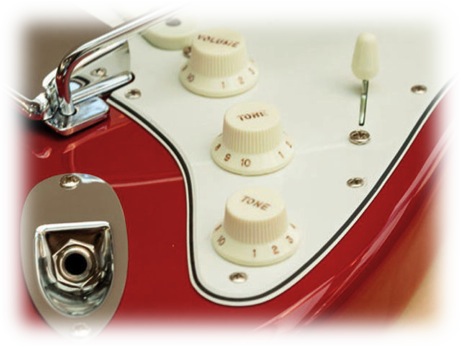

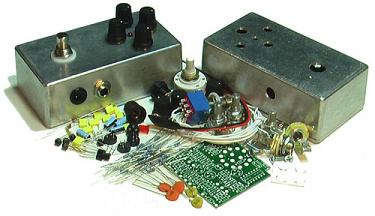
 Today’s article will teach you how to get controlled feedback with your guitar. Nothing is more raw and show-stopping then a feedbacking guitar, screaming those hit notes at the audience. Feedback can be very unpredictable too, so we will not only talk about ways to get it, but also be able to control it. So lets get started..
Today’s article will teach you how to get controlled feedback with your guitar. Nothing is more raw and show-stopping then a feedbacking guitar, screaming those hit notes at the audience. Feedback can be very unpredictable too, so we will not only talk about ways to get it, but also be able to control it. So lets get started..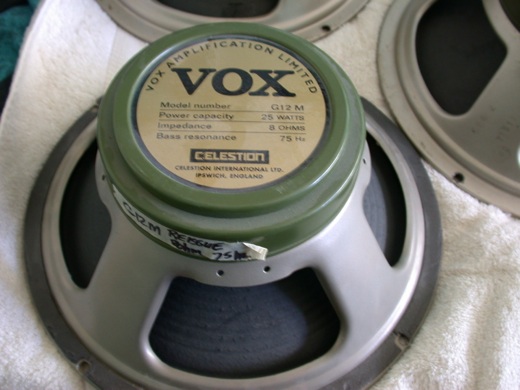
 Who hasn’t heard Albert, B.B. or Freddie King, Muddy Waters, Buddy Guy, or Eric Clapton and thought, “Damn, I want my guitar to sound like that.”
Who hasn’t heard Albert, B.B. or Freddie King, Muddy Waters, Buddy Guy, or Eric Clapton and thought, “Damn, I want my guitar to sound like that.” If you want a classic country tone, the equation is easy: a Fender Telecaster and a Fender amp. It’s the setup guitarists used to record the classic tones on all the old Johnny Cash, Merle Haggard, or Hank Williams albums. I could stop the article here, but I’ll throw a bone to players with more diverse setups. Fortunately, there is more than one way to nail the classic country tone and here are ideas to get you there.
If you want a classic country tone, the equation is easy: a Fender Telecaster and a Fender amp. It’s the setup guitarists used to record the classic tones on all the old Johnny Cash, Merle Haggard, or Hank Williams albums. I could stop the article here, but I’ll throw a bone to players with more diverse setups. Fortunately, there is more than one way to nail the classic country tone and here are ideas to get you there. When it comes to jazz tone, nothing replaces proper technique and quality phrasing. Jazz tone is as much about the sound of the chords and strumming as it is about having the proper guitar, EQ settings, and speaker choice. In spite of this disclaimer, I must admit that you will find it hard to play like Wes Montgomery with a Schecter Hellraiser through a Mesa Triple Rectifier. However, you do not need to spend your life savings on a vintage arch top from the pre-war era to get that infamous jazz sound. The sound of jazz guitar is usually defined as having a rounded envelope, similar to a piano, instead of a sharp attack decay cycle, as in country music. While the common choice in a jazz guitar is a semi hollow or hollow body guitar, such as a Gibson L5 or an Epiphone Sheraton, solid bodies have been commonly used in jazz fusion and modern jazz genres. The trick to getting that rounded attack from such a guitar is to use the neck pickup and roll off the tone knob to cut the cut some of the high end spike. The rounded sound of jazz comes from a curve in the higher frequencies of the guitar. On an acoustic or hollow body electric, these curves come very naturally due to the construction and acoustic resonance inside of the guitar body itself. On a solid body, the higher frequencies are not able to soften and often become harsh. This issue, however, is completely manageable via the guitar’s tone knob and amplifier settings. On the road currently, I use a Mexican Stratocaster with Harmonic Design pickups and receive compliments from old jazz professionals about my tone all the time.
When it comes to jazz tone, nothing replaces proper technique and quality phrasing. Jazz tone is as much about the sound of the chords and strumming as it is about having the proper guitar, EQ settings, and speaker choice. In spite of this disclaimer, I must admit that you will find it hard to play like Wes Montgomery with a Schecter Hellraiser through a Mesa Triple Rectifier. However, you do not need to spend your life savings on a vintage arch top from the pre-war era to get that infamous jazz sound. The sound of jazz guitar is usually defined as having a rounded envelope, similar to a piano, instead of a sharp attack decay cycle, as in country music. While the common choice in a jazz guitar is a semi hollow or hollow body guitar, such as a Gibson L5 or an Epiphone Sheraton, solid bodies have been commonly used in jazz fusion and modern jazz genres. The trick to getting that rounded attack from such a guitar is to use the neck pickup and roll off the tone knob to cut the cut some of the high end spike. The rounded sound of jazz comes from a curve in the higher frequencies of the guitar. On an acoustic or hollow body electric, these curves come very naturally due to the construction and acoustic resonance inside of the guitar body itself. On a solid body, the higher frequencies are not able to soften and often become harsh. This issue, however, is completely manageable via the guitar’s tone knob and amplifier settings. On the road currently, I use a Mexican Stratocaster with Harmonic Design pickups and receive compliments from old jazz professionals about my tone all the time.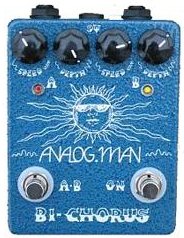
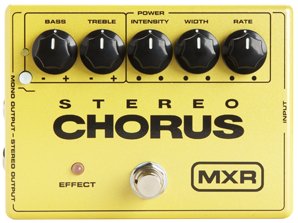 This made the list simply because it is the most cost-effective stereo chorus available! As well, Slash uses one to add even more mojo. A great feature of the Stereo Chorus is that there are separate EQ controls (Bass, Treble) allowing you to really shape the chorus exactly to your liking. As well with controls for speed, intensity, and width, this pedal really gives you unlimited tonal possibilities. With this amount of control, it can work well with any pedalboard. View the MXR Stereo Chorus on
This made the list simply because it is the most cost-effective stereo chorus available! As well, Slash uses one to add even more mojo. A great feature of the Stereo Chorus is that there are separate EQ controls (Bass, Treble) allowing you to really shape the chorus exactly to your liking. As well with controls for speed, intensity, and width, this pedal really gives you unlimited tonal possibilities. With this amount of control, it can work well with any pedalboard. View the MXR Stereo Chorus on  Effectrode Vibralux Tube Chorus
Effectrode Vibralux Tube Chorus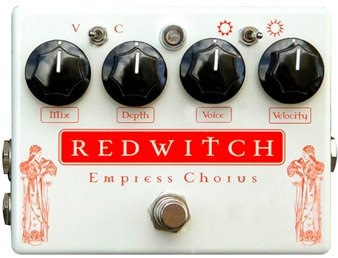 The Red Witch is a very deep and lush sounding chorus. It was something we noticed right away upon hearing it, that it just sounded really sweet to the ears. The Empress Chorus has a lot of controls to really tweak the sound, though it sounds great at just about any setting. The controls include a voice switch (chorus/vibrato), Mix dial (between chorus and clean), velocity, depth, and a bright switch. As well, there are dual outputs for playing in stereo between two amps. That’s how you really get a chorus with a lot of depth! View the Red Witch Analog Empress Chorus on
The Red Witch is a very deep and lush sounding chorus. It was something we noticed right away upon hearing it, that it just sounded really sweet to the ears. The Empress Chorus has a lot of controls to really tweak the sound, though it sounds great at just about any setting. The controls include a voice switch (chorus/vibrato), Mix dial (between chorus and clean), velocity, depth, and a bright switch. As well, there are dual outputs for playing in stereo between two amps. That’s how you really get a chorus with a lot of depth! View the Red Witch Analog Empress Chorus on